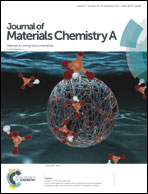An overview of molecular layer deposition for organic and organic–inorganic hybrid materials: mechanisms, growth characteristics, and promising applications
Abstract
It has been a strong desire for researchers to control material growth at the molecular and atomic levels. Molecular and atomic layer deposition (MLD and ALD) are two such techniques. In comparison to a huge amount of studies invested on ALD, the research on MLD is still relatively limited due to the difficulty in finding suitable coupling precursors, but the recently successful applications of MLD are very encouraging in many areas such as surface engineering, new energies, and catalysis. In order to further stimulate more research enthusiasm and educate beginners, we contribute this thorough survey on the progress of MLD. This review is a comprehensive account of MLD processes for organic and organic–inorganic materials, covering precursors, surface chemistry, growth characteristics, film properties, and promising applications. The work provides a complete summary of over 80 MLD processes for growing over 20 types of pure polymeric and metal-based hybrid polymeric materials. Given their similarities in mechanisms, we made a comparative description between ALD and MLD, and discussed the uncountable possibilities to combine both ALD and MLD for advanced materials with desirable properties. To feature and highlight the significance of MLD, this review specially gives some detailed discussions on MLD's applications in several important areas, including novel nanostructured materials, surface engineering, new energies (i.e., batteries, supercapacitors, solar cells, and water splitting), catalysis, and rewritable data storage. With this work, we expect to boost research interest and attempts at advanced materials using MLD as well as ALD.

- This article is part of the themed collection: Recent Review Articles


 Please wait while we load your content...
Please wait while we load your content...